February 12th is National Plum Pudding Day!
Happy National Plum Pudding Day!
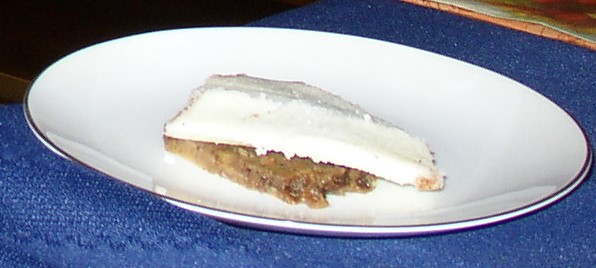
Since it isn’t the right time of the year for us to eat plum pudding, I’m sharing our story of plum pudding instead. Join me in learning about our Family Tradition of plum pudding, the American Tradition of plum pudding, and learn how to make it following our modernized recipe. In that last section, there are even some instructional videos and photos to show how it has been made it through the years.
Family Tradition
Plum pudding is a Krueger family tradition. Well, really a Boyce family tradition passed down to the Phillips family and then to the Krueger family.
Having married into the family, I have to admit that it took awhile to accept that dessert would be plum pudding rather than pumpkin pie on Thanksgiving.
My good-natured father-in-law’s first impression was mixed. He shared, “I first had it at Christmas in the Phillips home. I thought it tasted so-so, but I liked the topping. – JFK“
Thank goodness we get to have pie later during the holiday weekends. For family historians, carrying on family traditions, such as plum pudding, is important and very special. So like it or not, move over pie, plum pudding is the featured dessert for the main meals.
Boyce
Our recipe is said to be 400-years old. Our Boyce lineage can be traced back to a Revolutionary War Soldier named Robert. He fought at Bunker Hill and other locations. Maybe he got through it all thinking of the plum pudding he would have when the war was finally over?

Gertrude
Gertrude Lovin Boyce, the last Boyce in the family tree, only had sons. Yet, the plum pudding tradition continued to be passed down. Her daughters-in-law learned to make plum pudding. It continued to be served every Thanksgiving and Christmas.
Her daughter-in-law, Leona, Floyd’s wife, passed it down to her children. Initially, her daughter assumed it was too labor intensive and didn’t start making it until a decade into her marriage. After that, it became a yearly tradition.
Making the hard sauce is a tradition too. Kids (young and old) have enjoyed licking the sugar/butter concoction from their hands after the sugar mountain has been constructed.
When I think of plum pudding…
Family members were asked to finish the sentence, “When I think of plum pudding ___________________.” Not everyone came up with an answer, so maybe the thought of plum pudding leaves some speechless?
I definitely think of Grandma and of sitting on kitchen surfaces other than chairs – CMK
I think of Christmas and making the butter and sugar topping with Grandma, CMK, AFK & MBK – IJK
I think of lots of sugary topping! – RCSK
All I think of is a giant pile of white sugar. – HAW
I think of Coralee, Gertrude, family tradition, and how much topping and how little pudding I can put on my plate. – DRCK
I think of our family tradition and the requirement that I had to have a thin slice before piling on the topping. I don’t remember when I actually liked it. – CMPK
I think of feeling obligated to take a small piece to make Grandma happy. – EJK
I think… It’s a tradition. So I HAVE to eat it. – JNK
The thing you have to eat before pie on holidays. – AFK
When I think of plum pudding (just a stream of consciousness)… making the topping mountain, Thanksgiving with family, Christmas with family, unusual, Mom searching for the right dried fruits and figuring out what substitute when she can’t find everything – BPK
My first thought is slathering it with the sugar frosting to cover up the taste of the pudding. But I also have very fond memories of making the butter/sugar mixture with Grandma and licking the utensils after. – CJK
American Tradition
Plum Pudding dates back to Medieval times. It has long been popular in England and is sometimes called figgy pudding. Yes, like in the song “We wish you a Merry Christmas.” It was brought to America by British colonists. In 1858, a novelist named Anthony Trollope called plum pudding Christmas Pudding in his book Doctore Thorne, and that name stuck. It is odd that the National Day celebrating something often called Christmas Pudding falls on February 12th, but the National Day people say it gives us a reason to think about plum pudding another time of the year.
In any case, plum pudding does not contain plums and is not what we today think of as pudding.
Historically, raisins and currants were called plums, so that is where the plum part of the name originated.
Pudding was not always the sweet, creamy, custard-like dessert we think of when we hear pudding. Puddings were originally (think back in Medieval days) more like sausages with minced meal, cereal, spices, and blood stuffed into intestines or stomachs then boiled or steamed. The saying “the proof is in the pudding” came from the worry that the meat in said pudding might be contaminated. There was no way to find out without eating it. Eventually, dried fruits “plums” were added to the meat puddings. Later, meats were left out and the puddings moved from being a main dish to a dessert.
According to Wikipedia and other sources, plum pudding is usually steamed or boiled. Ours is baked. Recipes for plum pudding associated with its National Day do not look anything like tradition plum pudding or our plum pudding.
It is hard to describe the consistency of our plum pudding – maybe mushy fruitcake would come close?
Recipes for plum pudding can be found in the earliest American cookbooks.
The Frugal Housewife, written by Susannah Carter and published in New York in 1803, included a recipe for Boiled Plumb Pudding.
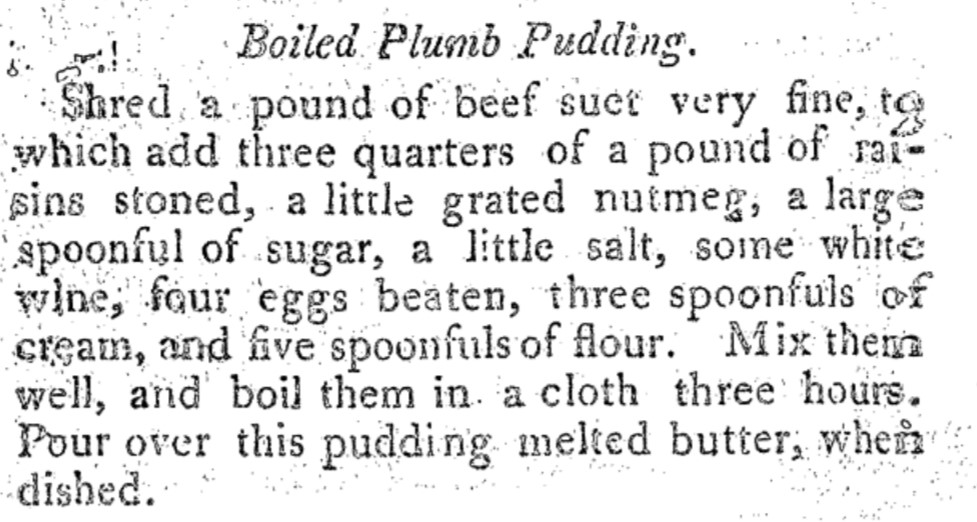
The Virginia Housewife, written by Mary Randolph and published in Virginia in 1824, also included a Plum Pudding recipe.
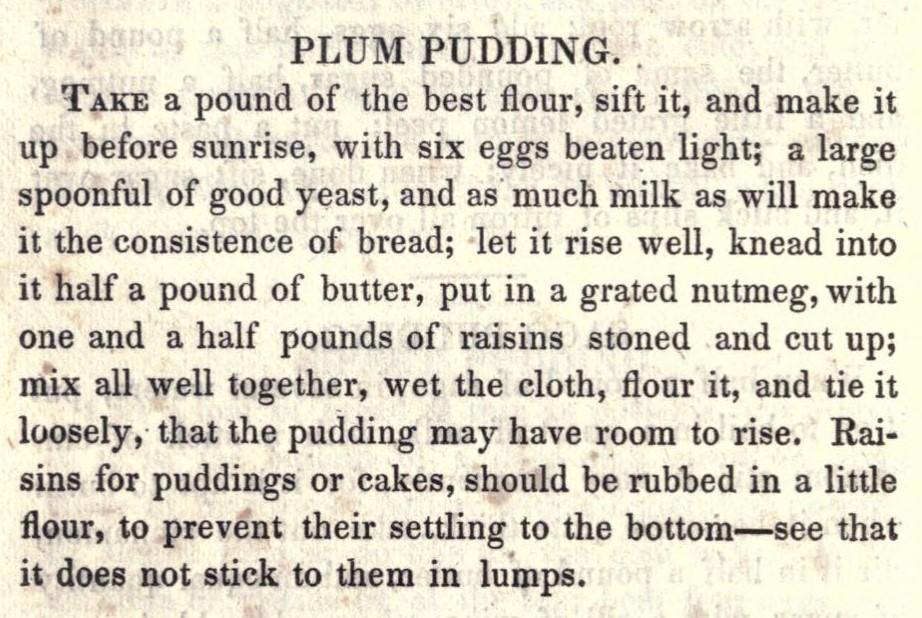
In the 1850 cookbook, “Miss Beecher’s Domestic Receipt Book,” the author included two versions of plum pudding. Note that recipes were called receipts back then.
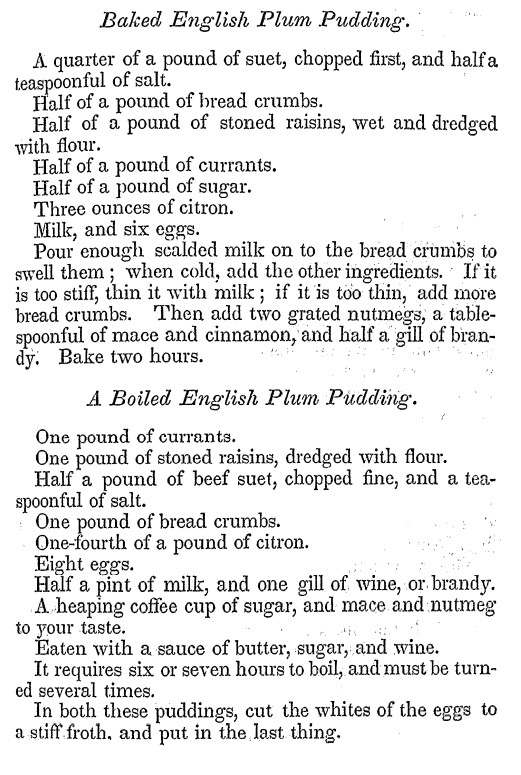
In the final historic examples, Fannie Merritt Farmer included two plum pudding recipes in her Boston Cooking-School Cook Book when it was published in Boston in 1919.

Modernized Recipe
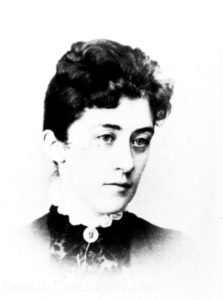
By the time Gertrude Lovin Boyce was married to Guy Allison Phillips in 1888, her family had been making plum pudding for hundreds of years. As times changed and kitchen technology improved, the recipe and method for cooking plum pudding were tweaked.
Gertrude passed down the recipe, but several modifications have had to be made through the years to be able to make the Boyce version of plum pudding in our modern times. Following are the recipe, instructional videos, and demonstration photos for making our version of plum pudding. Okay, the instructional videos are cute home videos of young children helping Grandma make plum pudding, but they also demonstrate the plum pudding making process.
Step One: Crackers and Milk
- 1-pound crackers, broken up by hand
- 2-quarts milk
Soak the crackers and milk in the afternoon.
Step Two: Add the remaining ingredients
- 2/3 cups dark molasses
- 1 cup sugar
- 7 eggs
- ¼ pound butter, melted
- 3 teaspoons nutmeg
- 3 teaspoons cinnamon
- 2 teaspoons cloves
- Mixed preserved fruit or ¼ section orange peel and a little lemon peel (for example, one 4 oz. container of orange peel and 1/2 container of lemon peels) A problem in a small town is not being able to buy the containers until the holiday season – well after early November. To get plum pudding ready in time for Thanksgiving dinner, it needs to be started in early November.
- Extract of vanilla and lemon (one teaspoon each)
- ½ pounds raisins or ½ pounds currants or 2/3 citron
- Salt to taste (about 1+ tablespoons)
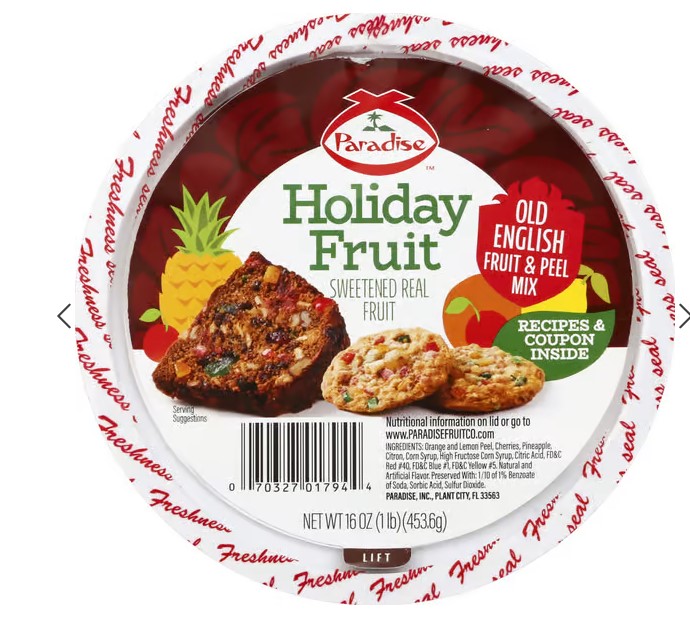
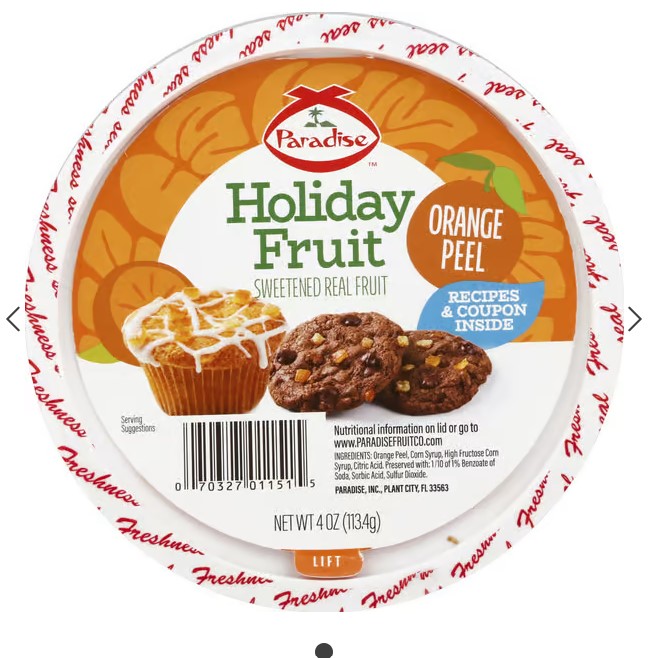
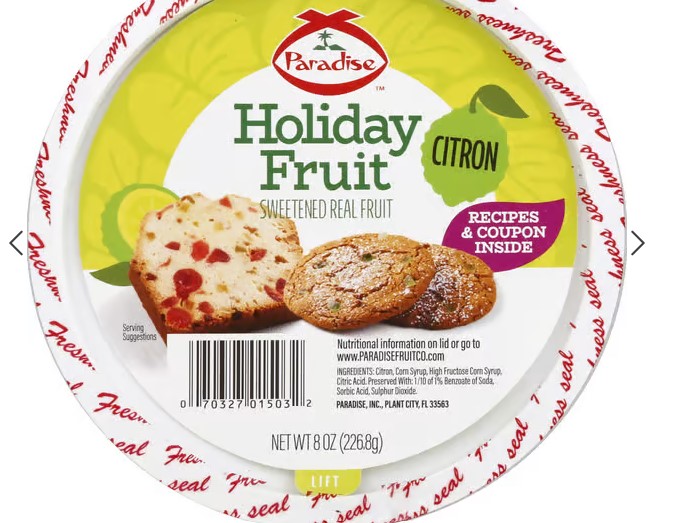
Add other ingredients to the cracker/milk mixture and let stand overnight or several hours.
Careful viewers will note that the recipe aged 100-years between 1980 and 1995. In the first video it was called a 300-year old recipe.
Step Three: Pour into pans
Pour into paper-lined or foil pans.
Step Four: Bake
Preheat oven to 350-degrees F.
If you make the whole recipe in one pan, bake for 1 hour and 45 minutes. Baking time is reduced if you split it into multiple pans. For example, it takes 1 hour and 15 minutes when split between three or four foil pans.
Step Four: Ripen
This should be made well before you want to use it so that it has a chance to ripen. It takes several weeks to ripen.
This can be the most difficult step. Beware when you ripen. In the olden days people often had unheated rooms. The temperature in those rooms was great for the ripening process. Today most homes do not have a room at the correct temperature. The baked pudding can be left out a few days and then refrigerated or frozen.
Mold forms quickly outside the refrigerator. In the refrigerator it doesn’t ripen.
Though, from personal experience, we know that mold can form when stored inside the refrigerator too. Some say to just cut off the moldy part and serve the rest. Others say, “ew, no” to that.
Step Five: Make the Hard Sauce
Thank goodness for the hard sauce. For some, it is the only thing that makes it palatable. This topping was not around until the 1800s, so we are lucky to live when we do.
- 1/2 cup butter (one stick)
- 1 cup sugar
- Nutmeg
Knead sugar and butter together by hand and form into a mountain. Sprinkle with nutmeg.


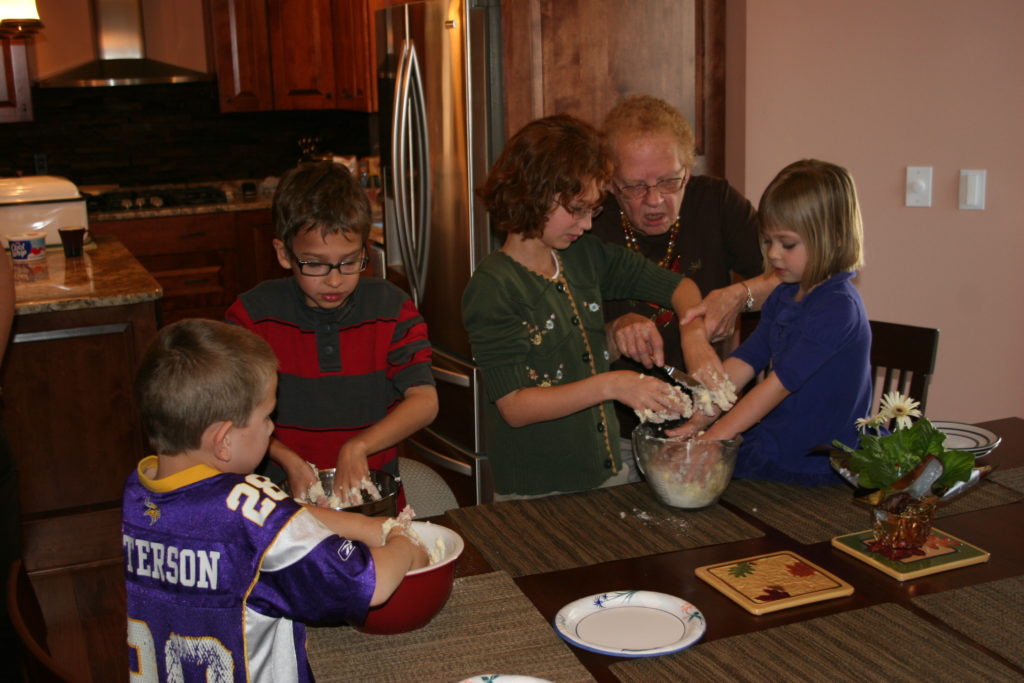
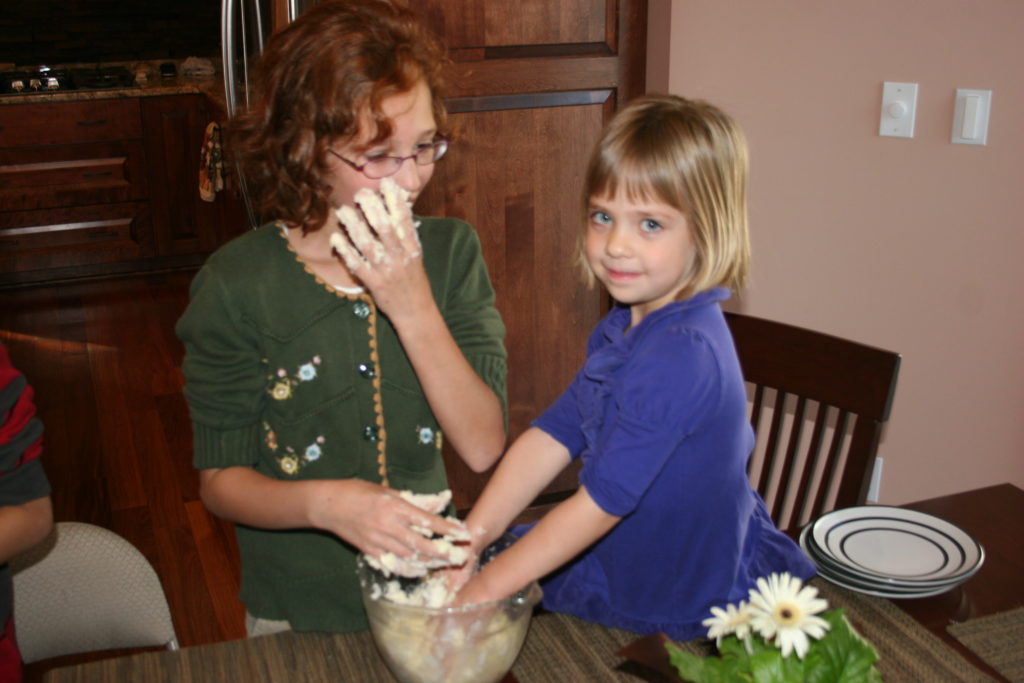
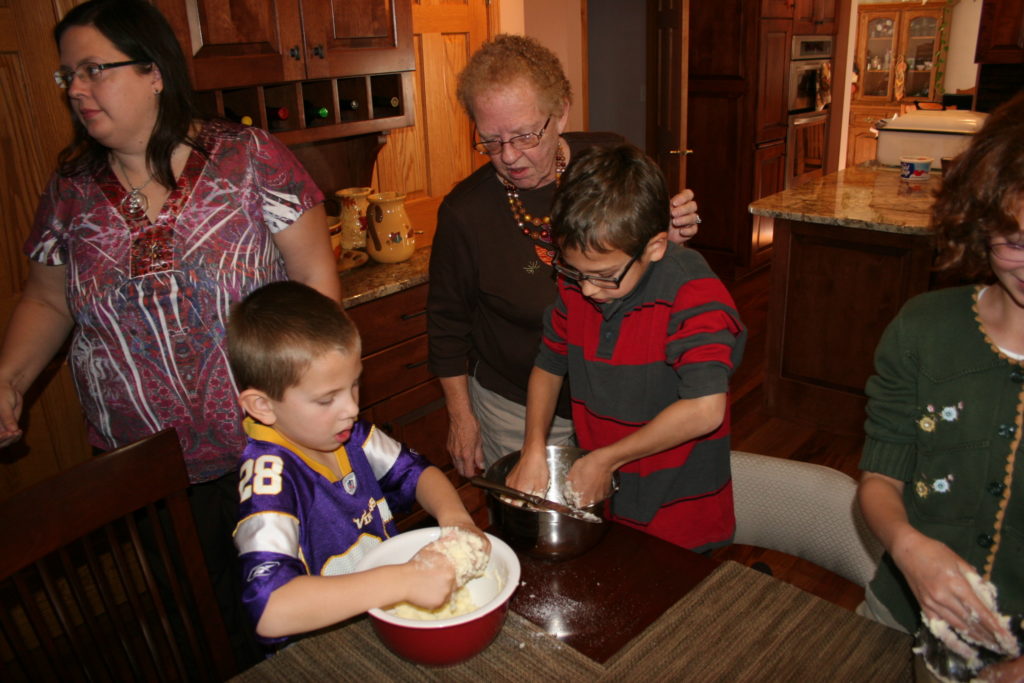

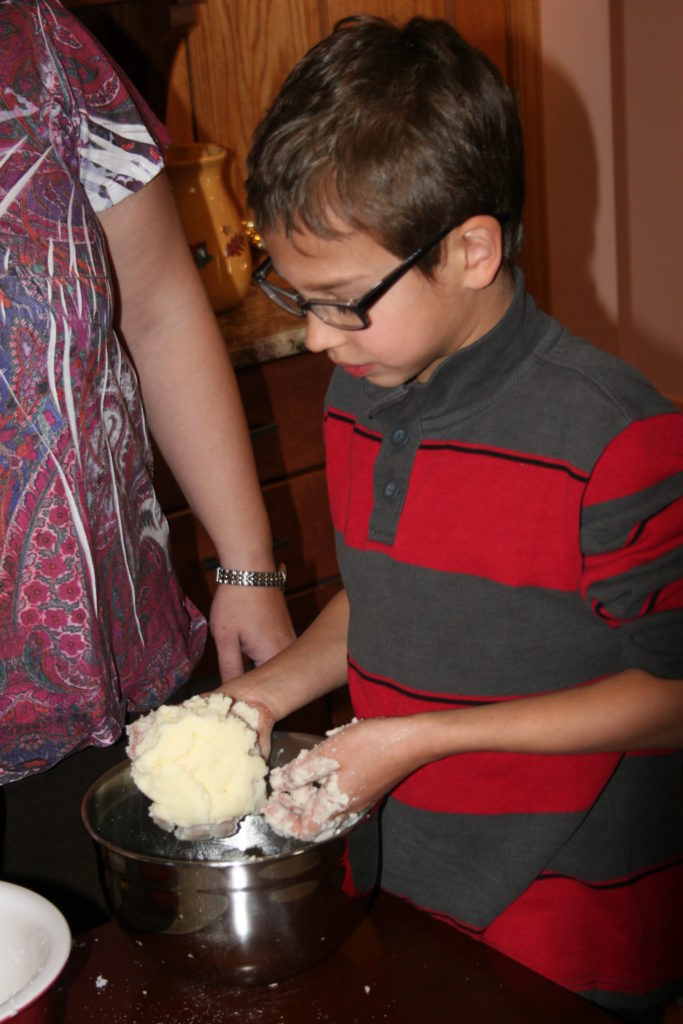
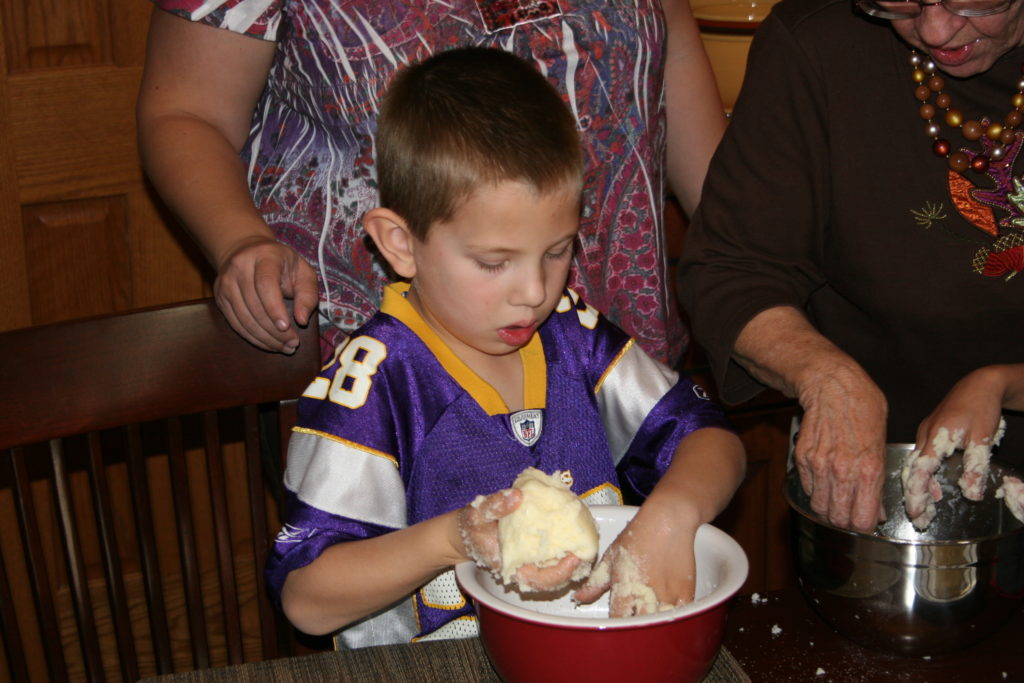
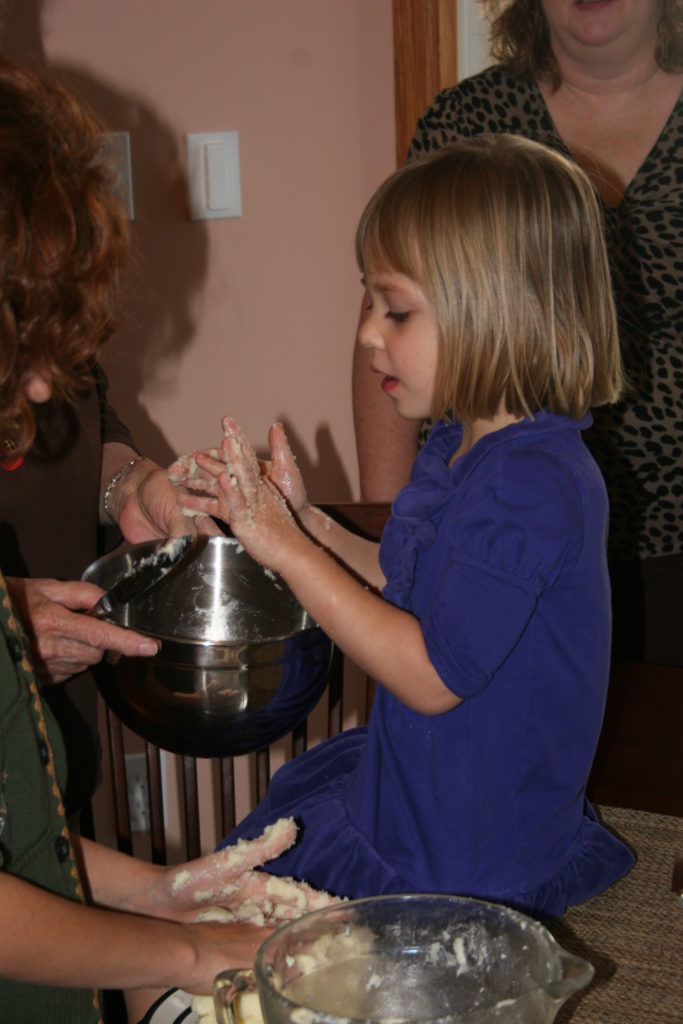
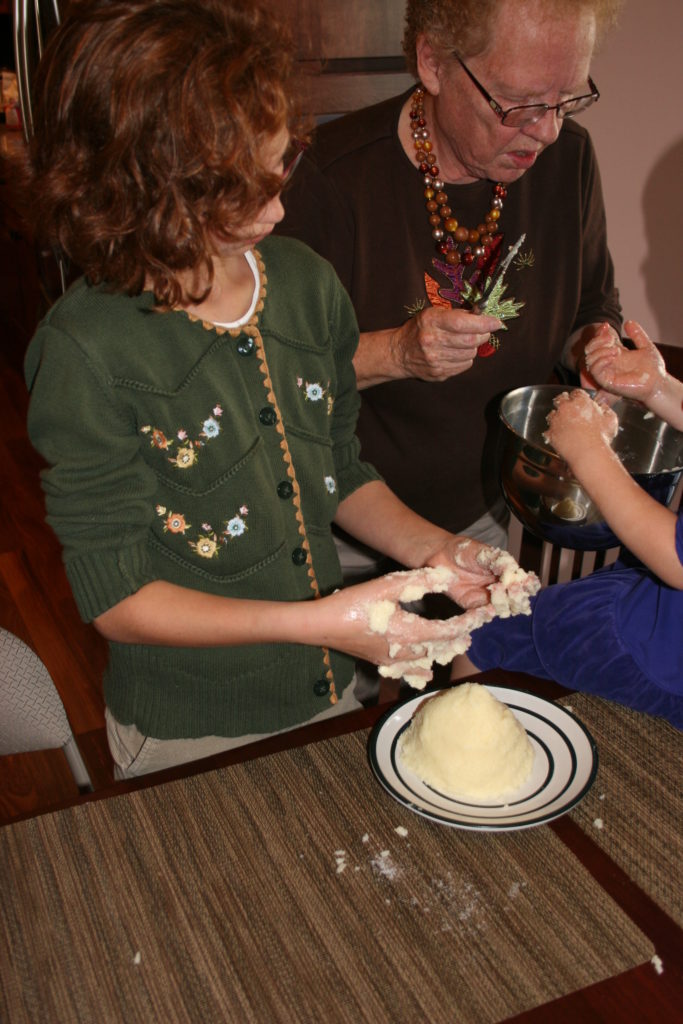
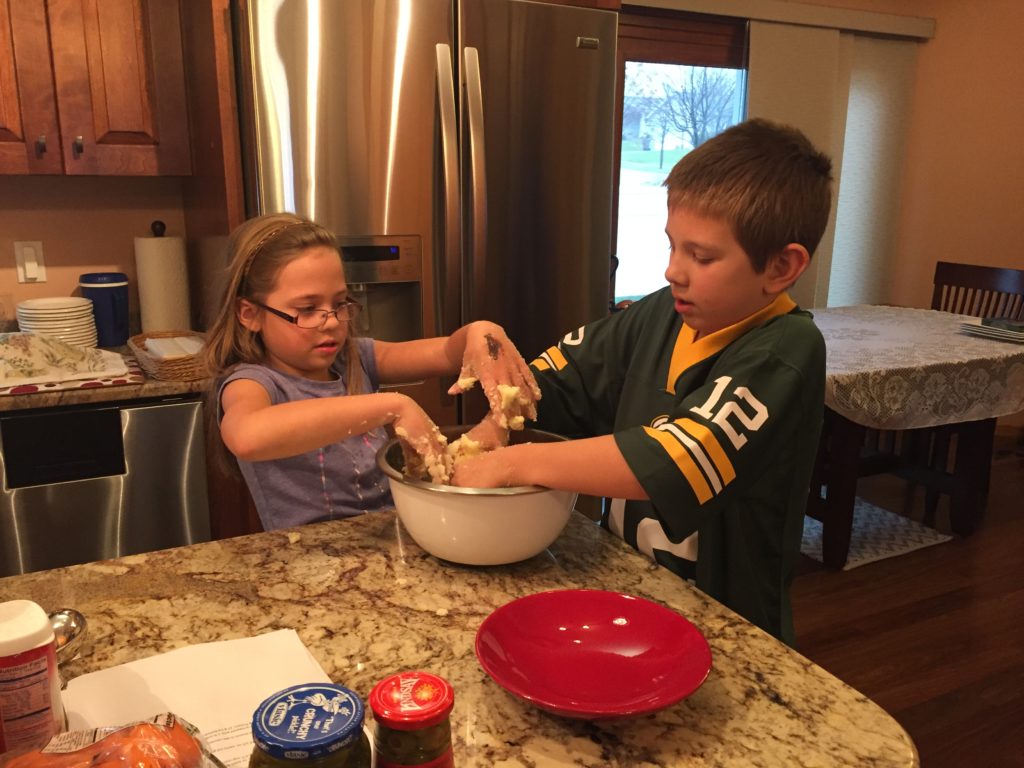
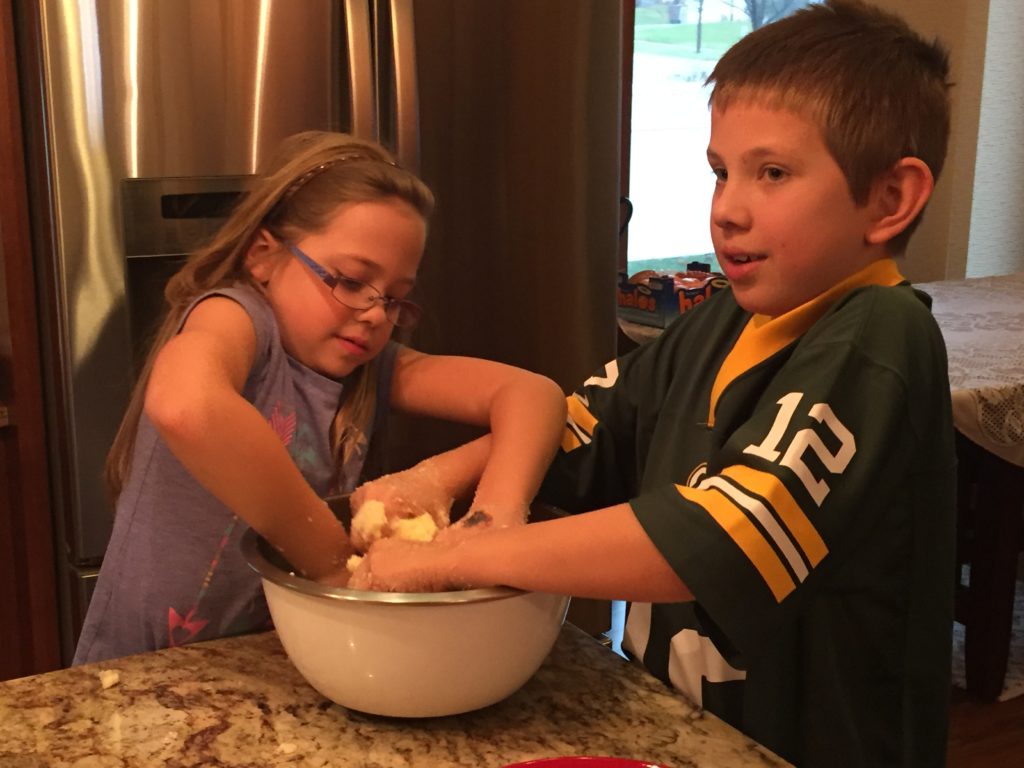
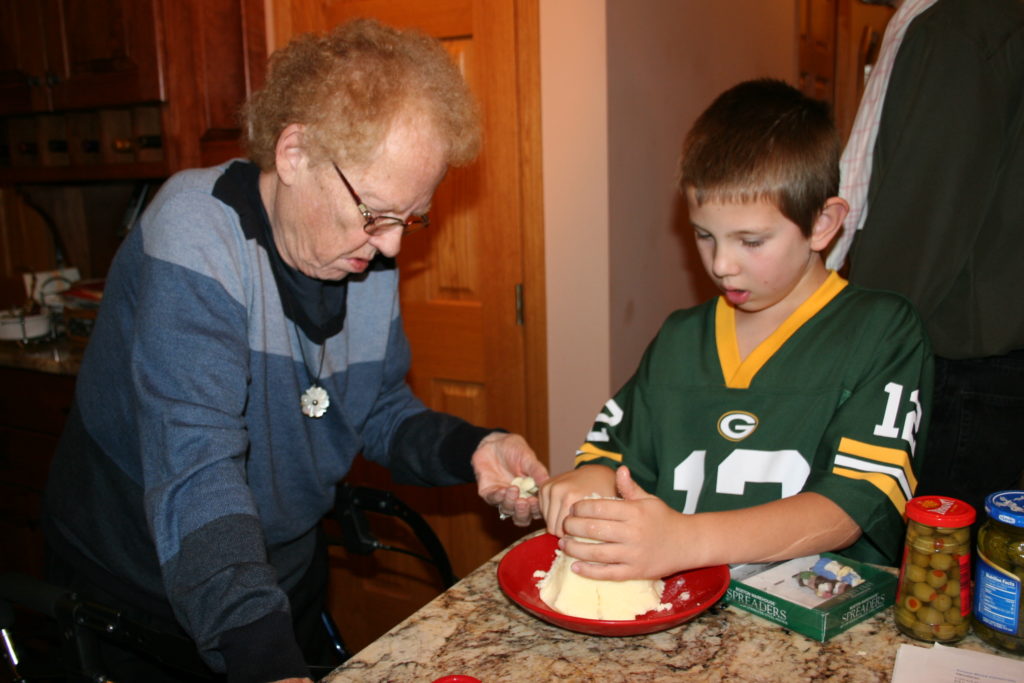
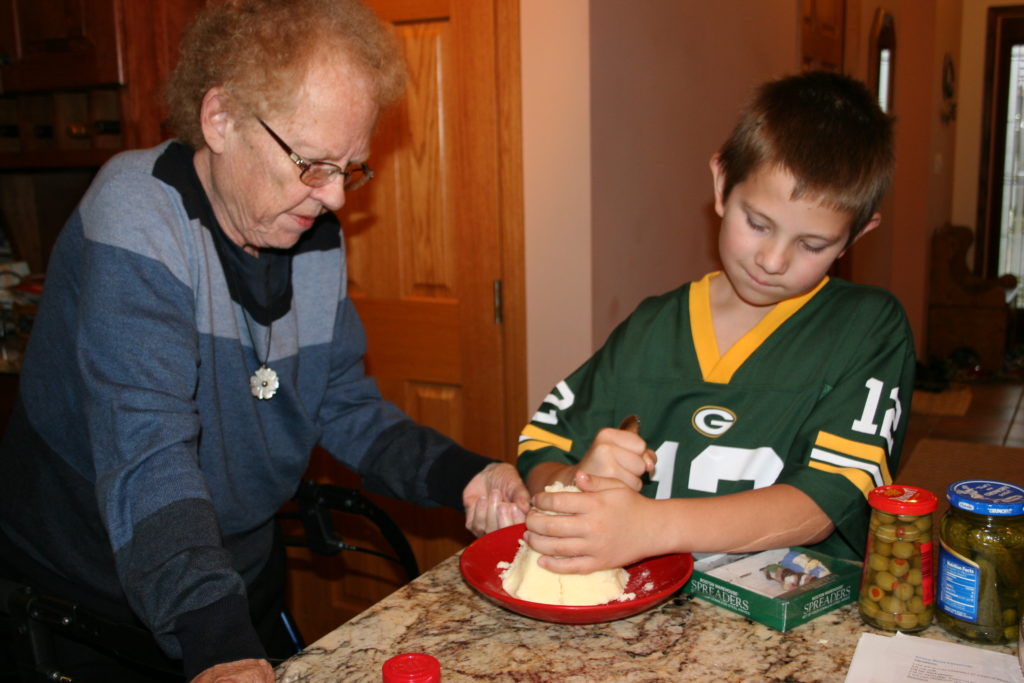
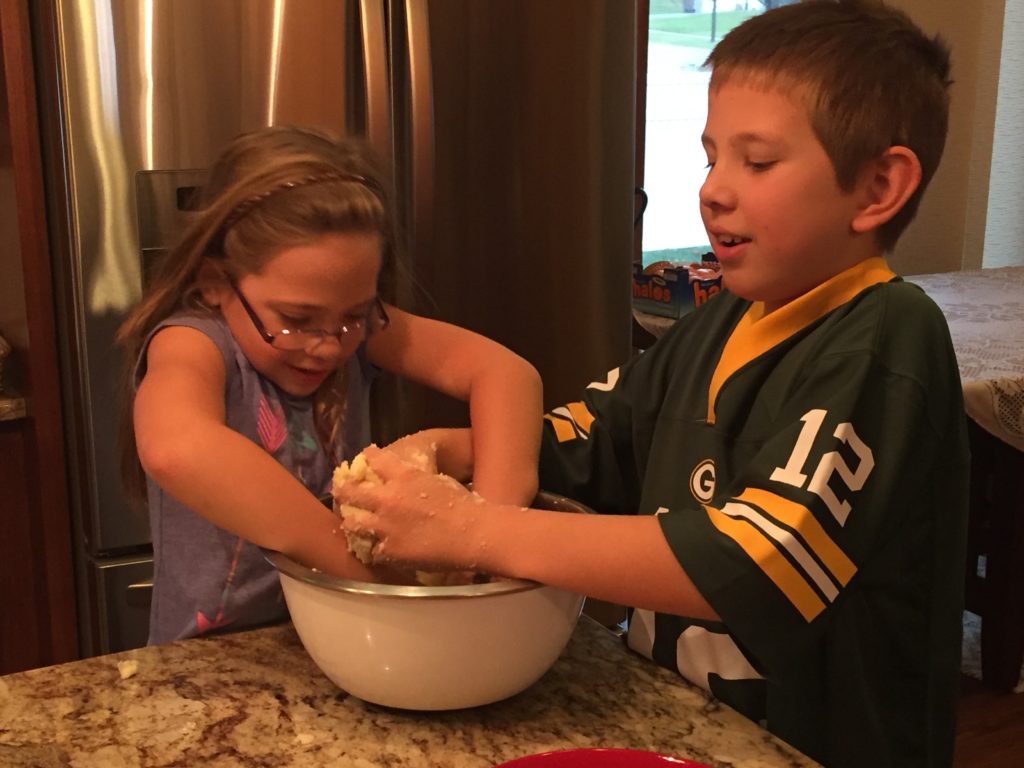
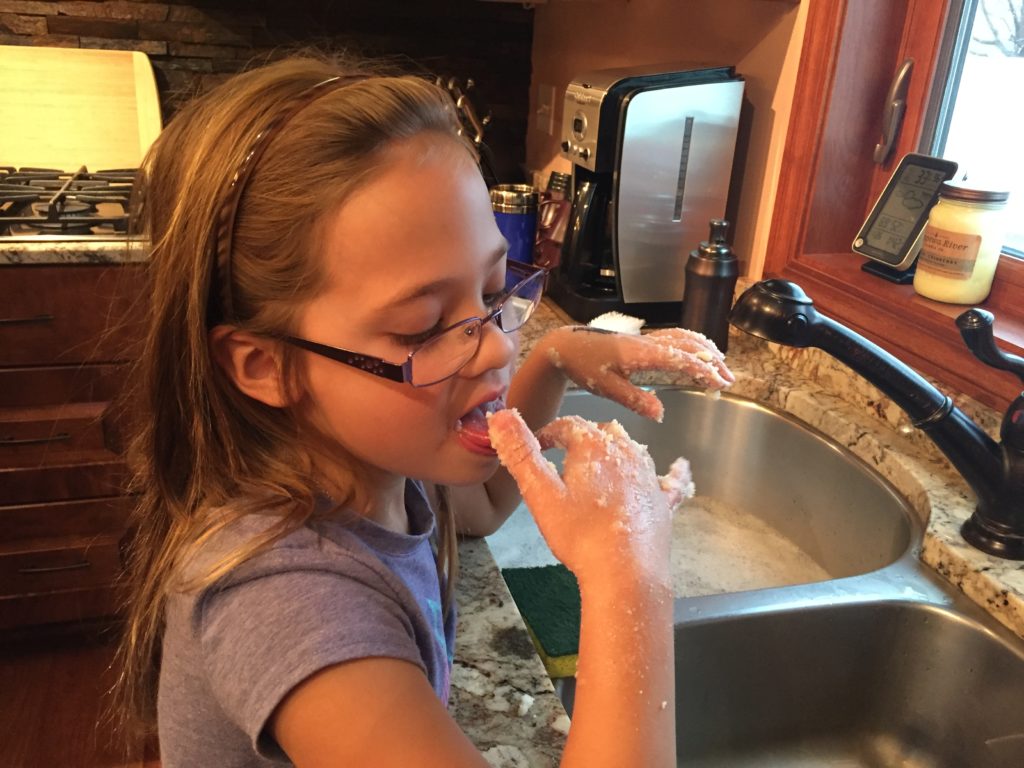
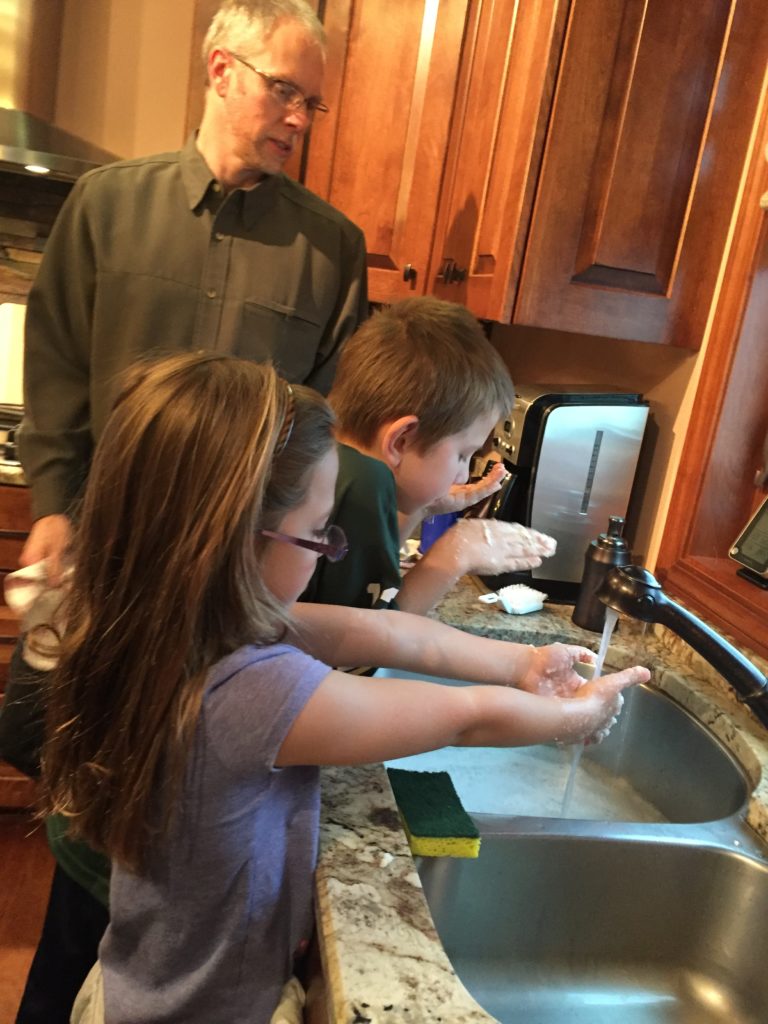
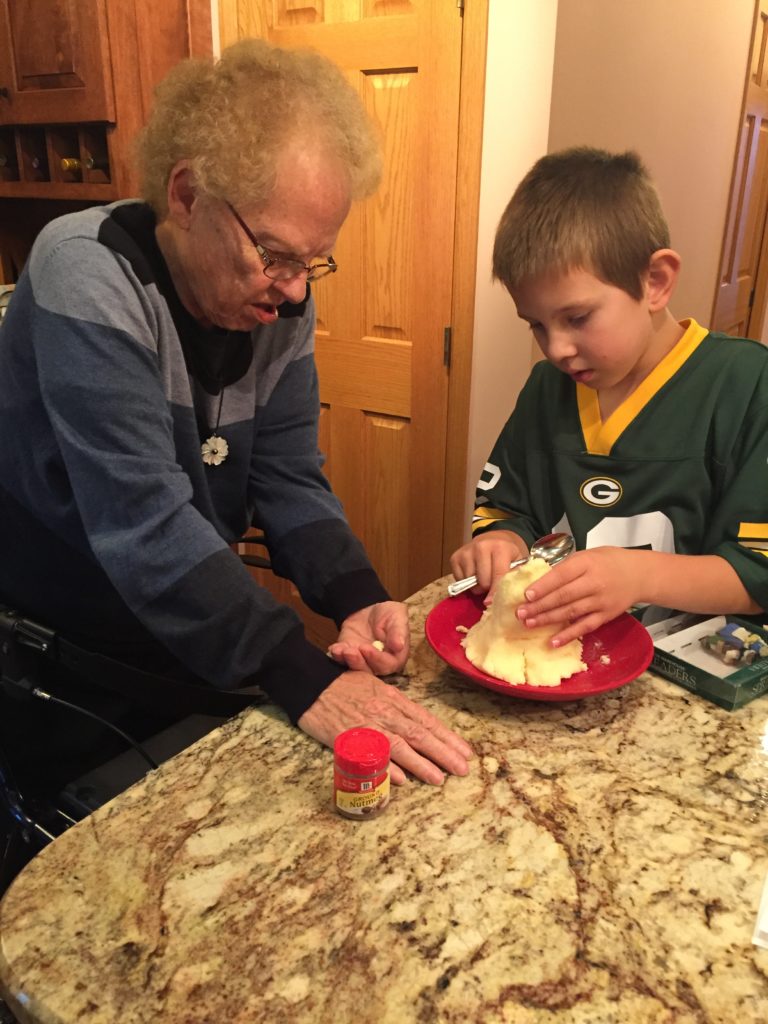

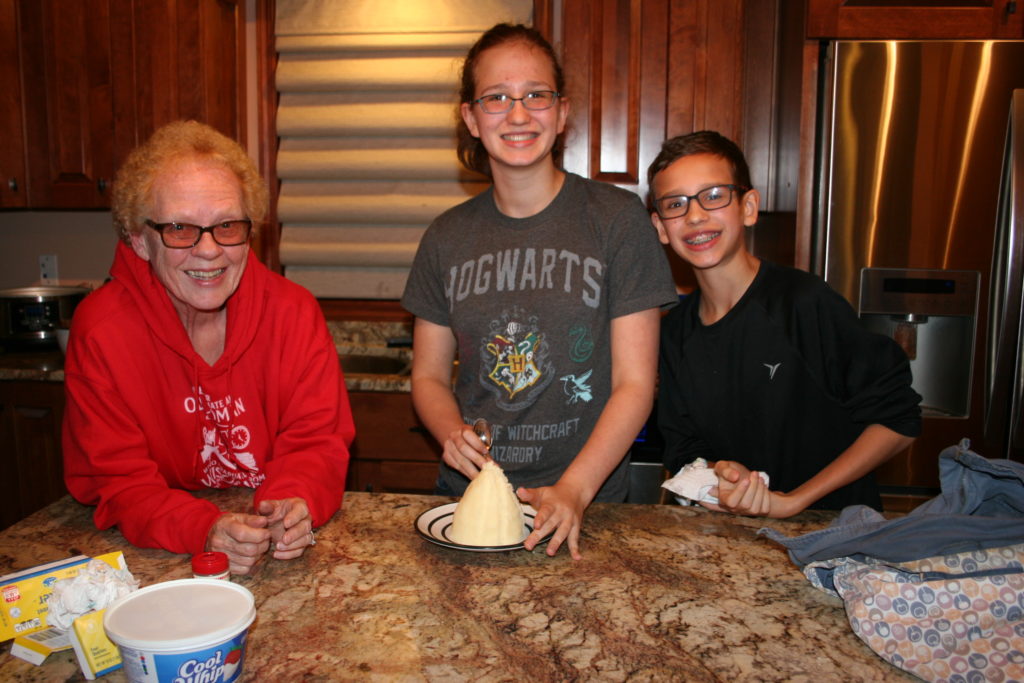
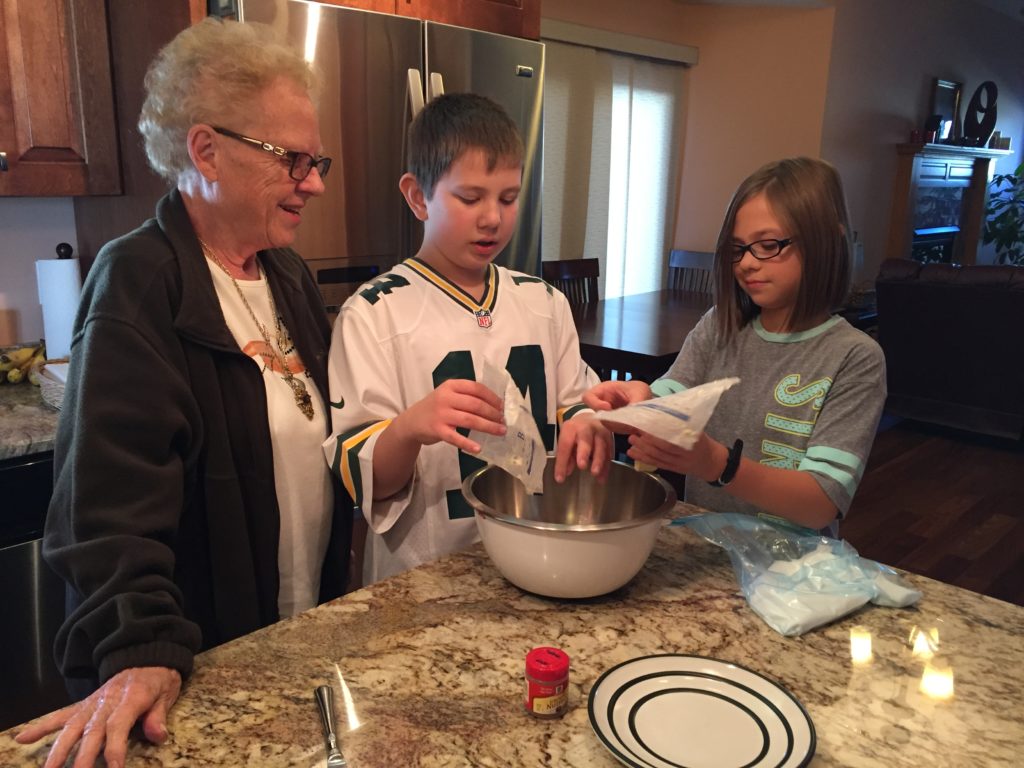
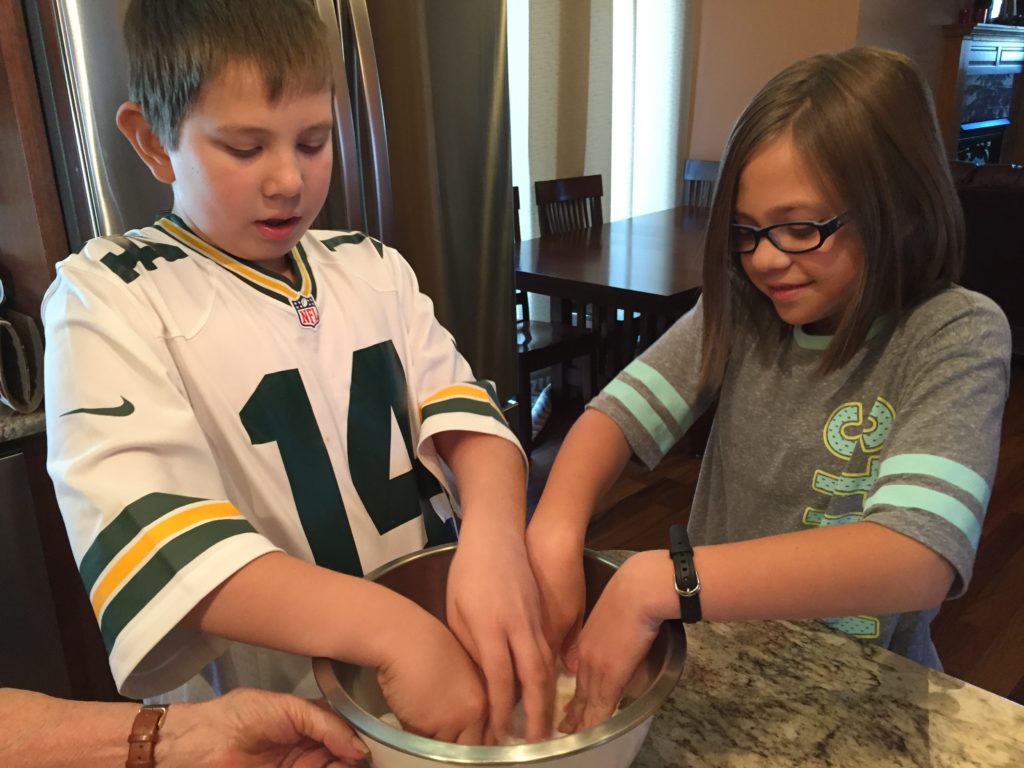
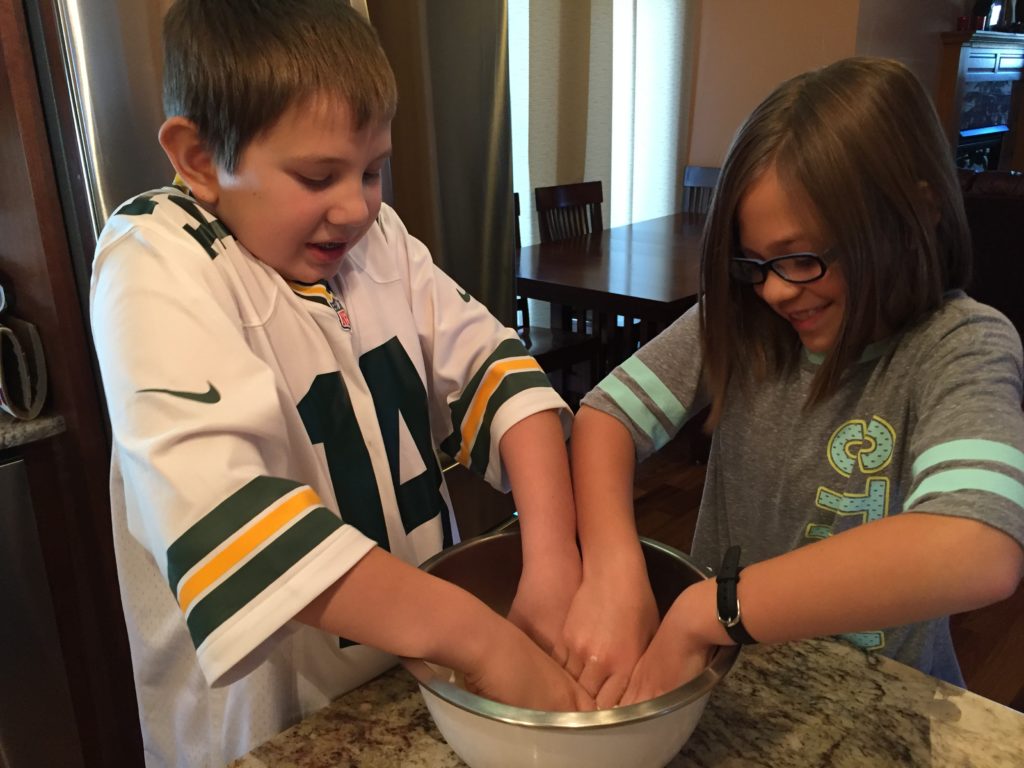
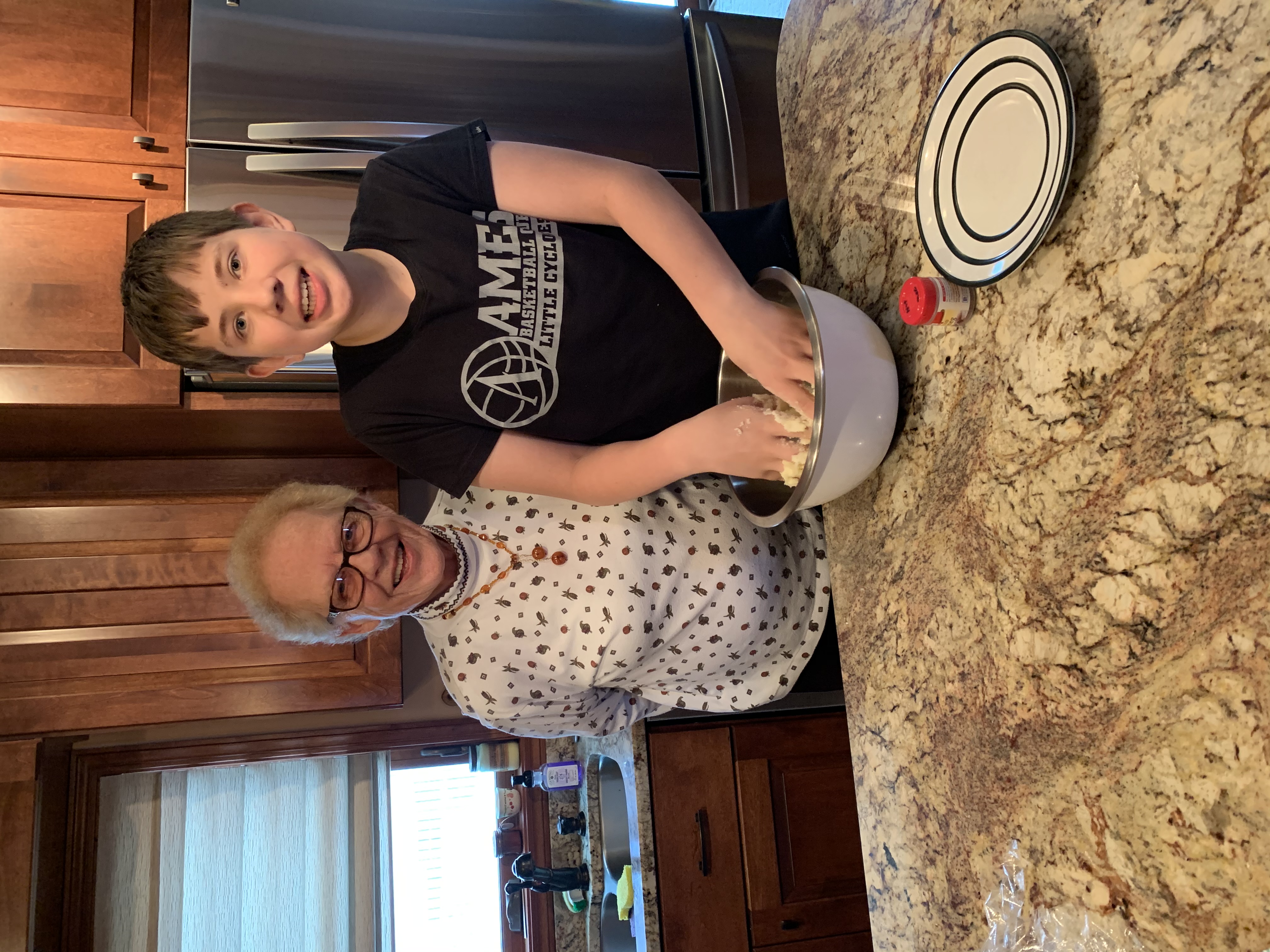
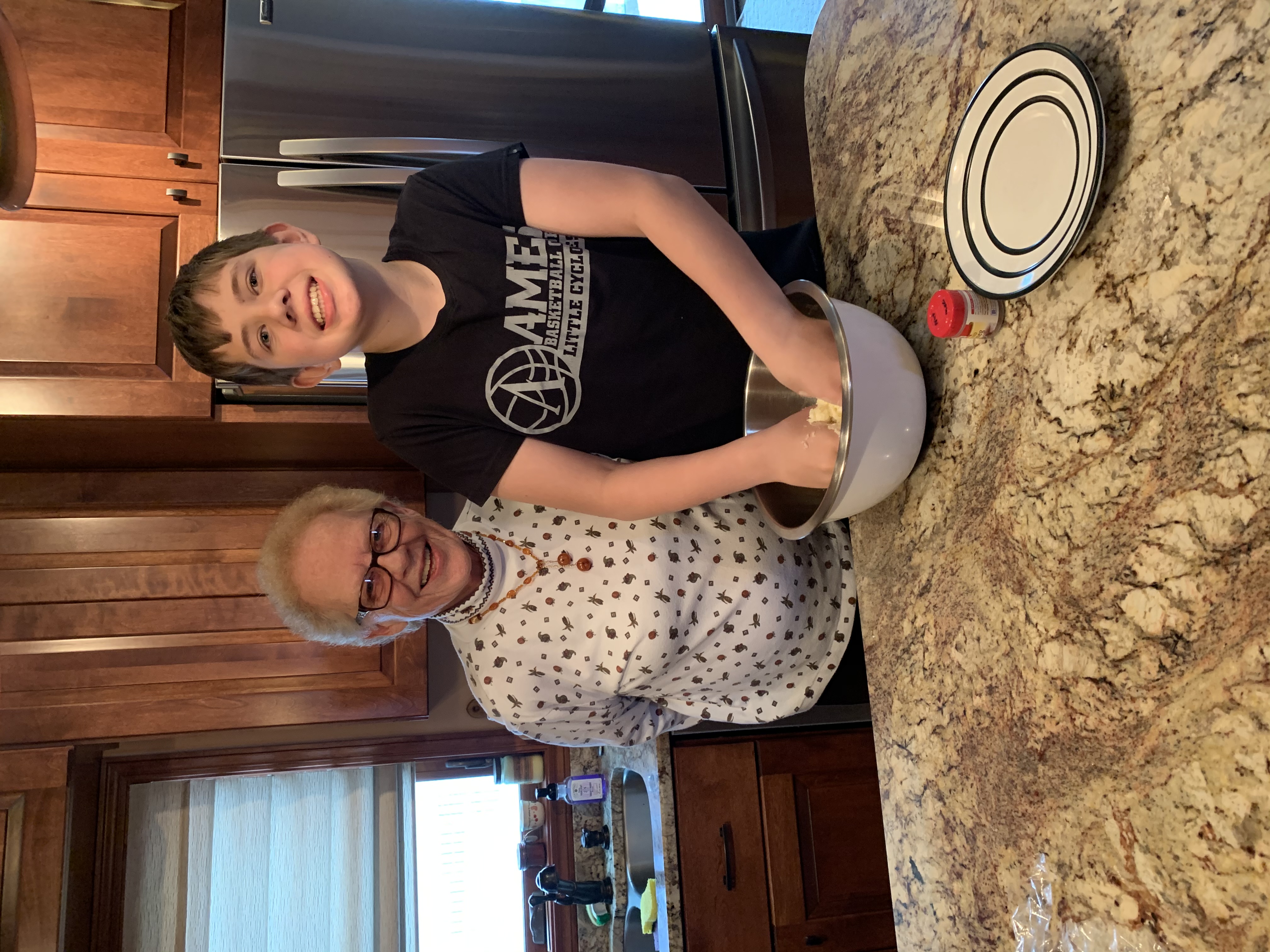
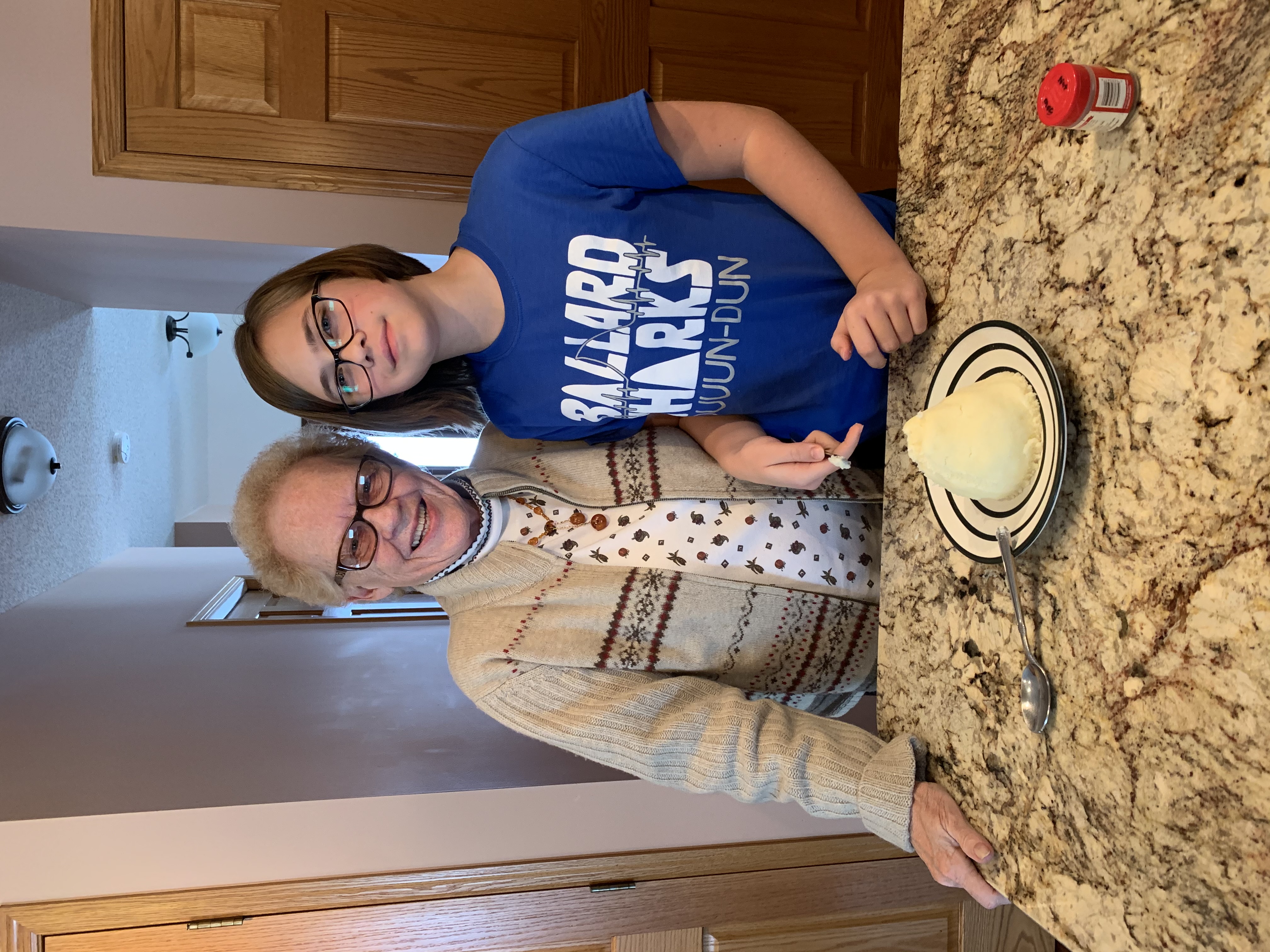
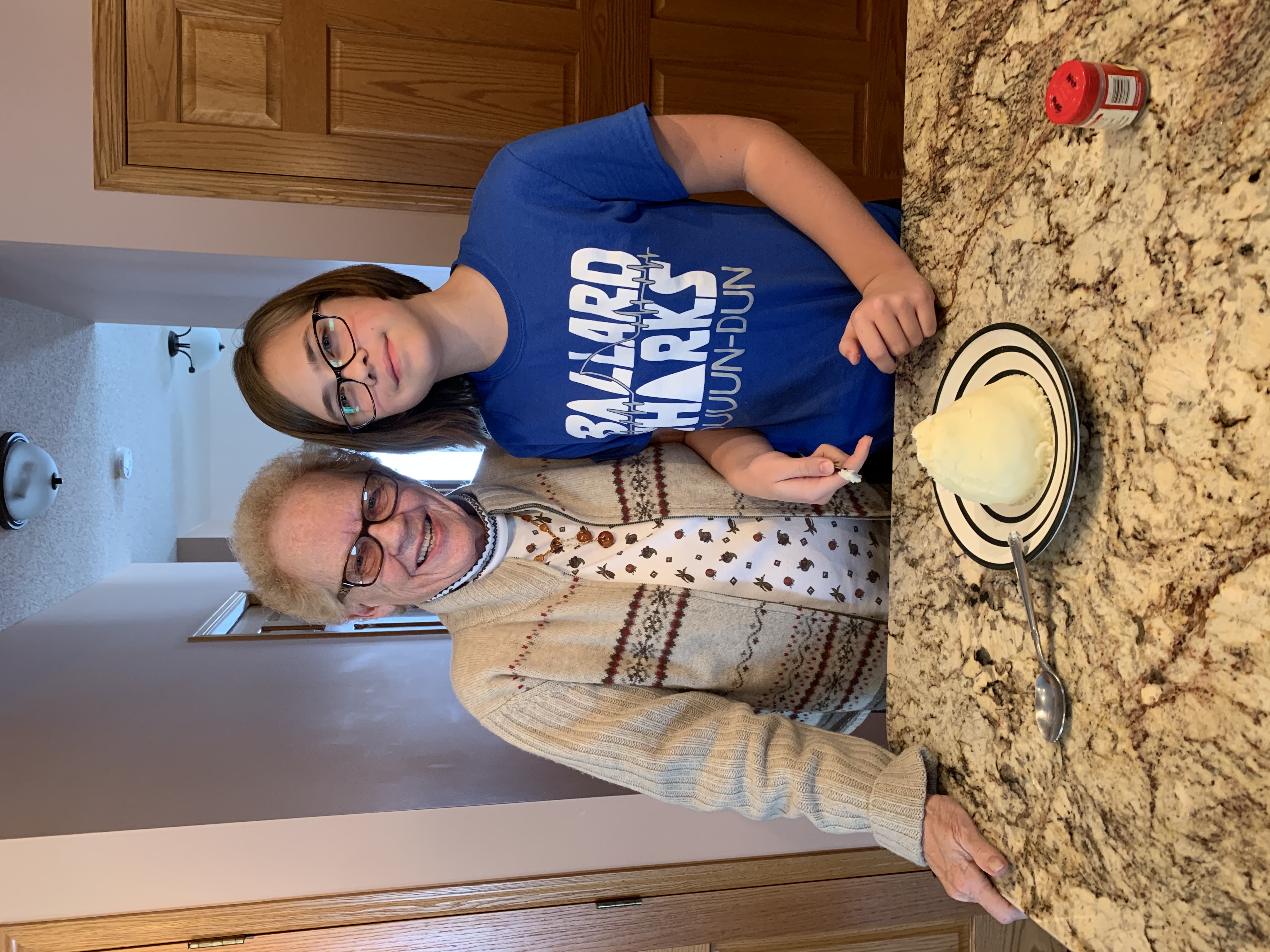
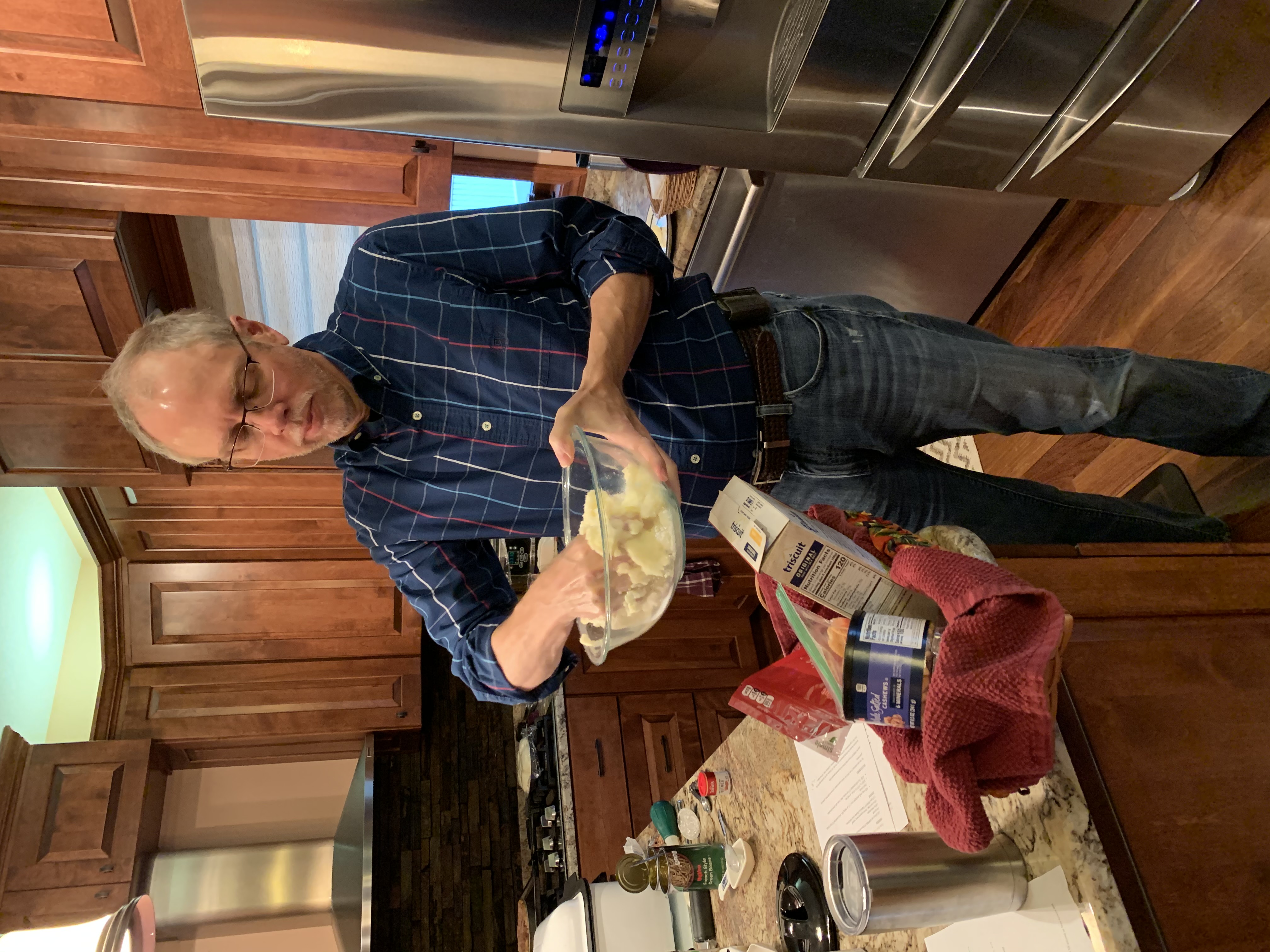

Enjoy?
After a day of making, weeks of ripening, and a mess of making the hard sauce, plum pudding is ready to be served. The pudding is cut into slices and warmed up a little in the microwave. Then slices of hard sauce are put on top. Kids (and those who married into the family) often take a more generous helping of hard sauce than is appropriate, but we all fulfill our obligation to partake in the plum pudding.
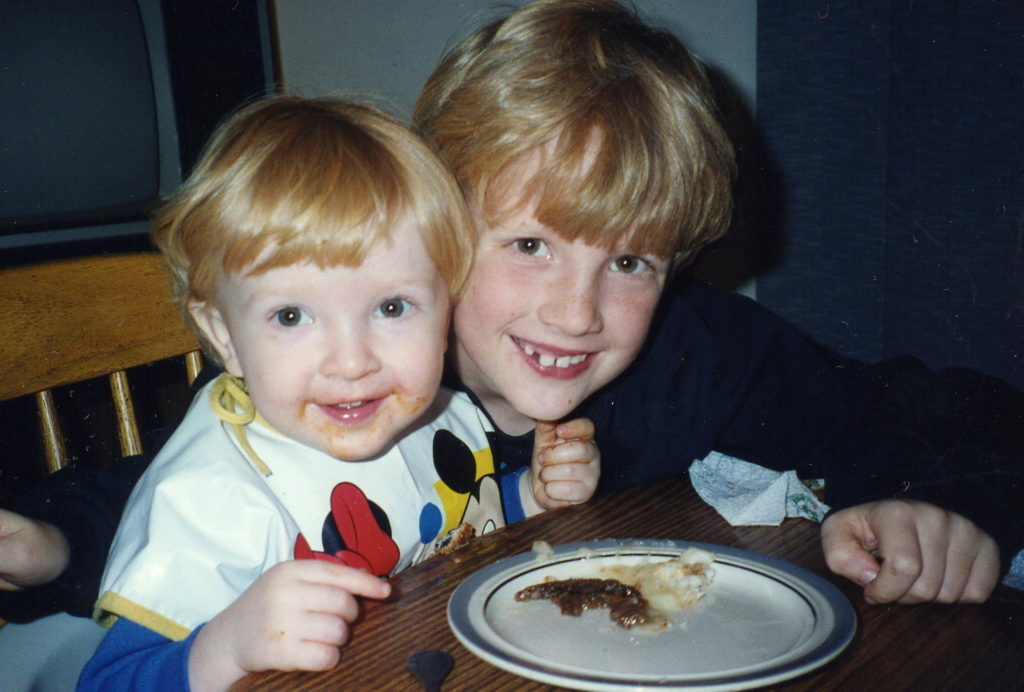

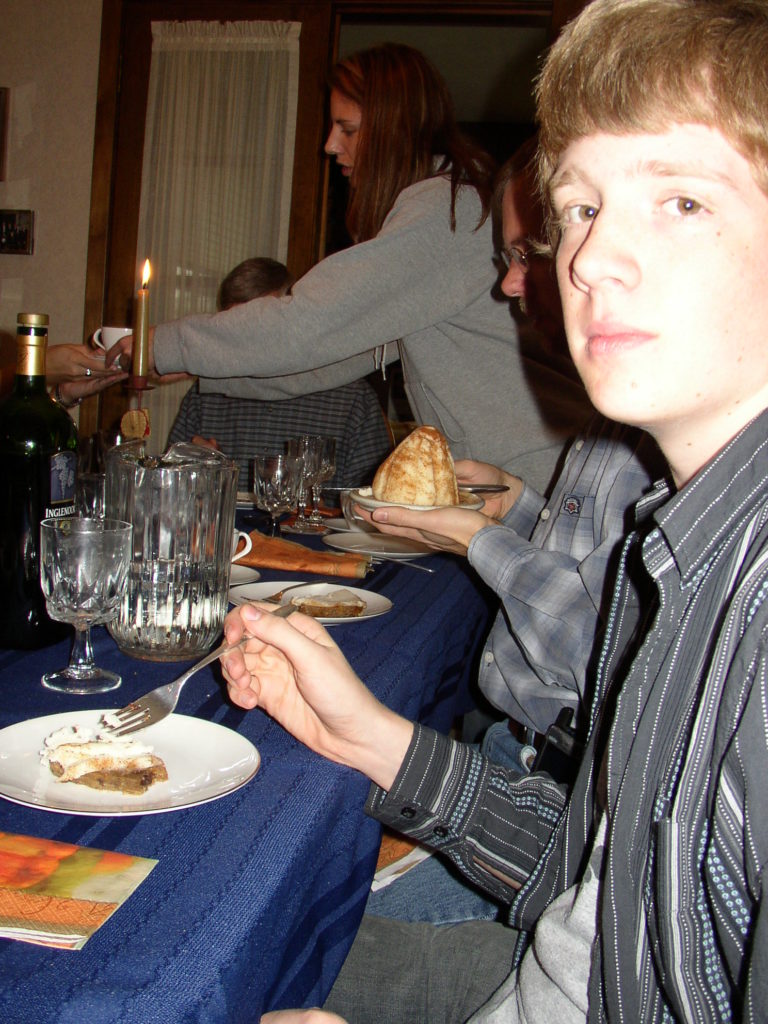
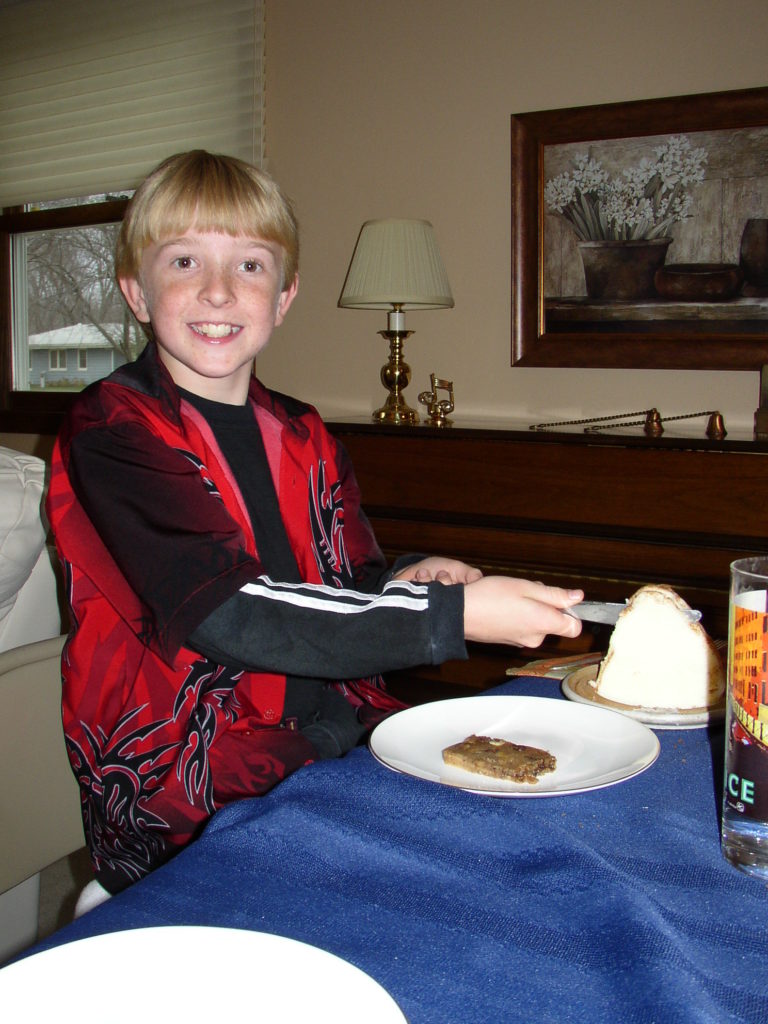

Happy Plum Pudding Day!
Well, happy plum pudding day! We are glad to have experience with plum pudding, but are happy to leave it as something to eat at Thanksgiving and/or Christmas.
Selected Sources:
“Christmas pudding,” Wikipedia (https://en.wikipedia.org/wiki/Christmas_pudding : accessed 28 Jan 2021)
“Christmas pudding (aka plum pudding,” Food Time Line (https://foodtimeline.org/christmasfood.html#plumpudding : accessed 28 Jan 2021)
“History of Plum Pudding,” Rays Plum Puddings (https://www.raysplumpuddings.com.au/history.php : accessed 28 Jan 2021)
“National Plum Pudding Day – February 12,” National Day Calendar (https://nationaldaycalendar.com/national-plum-pudding-day-february-12/ : accessed 28 Jan 2021)
“National Plum Pudding Day – February 12, 2021,” National Today (https://nationaltoday.com/national-plum-pudding-day/ : accessed 28 Jan 2021)
“Pudding,” Wikipedia (https://en.wikipedia.org/wiki/Pudding : accessed 28 Jan 2021)
The Phillips Family
- Publication date: September 2015
- Pages: 432
- Formats:
- This book traces our Phillips ancestry. It follows the Phillips family from 18th century ancestors in New York to more recent asparagus farmers of Illinois. Five generations of descendants of Wilhelmus Philip are covered. The families of Jacob W Phillips, his son Albert Aveldo Phillips, his son Guy Allison Phillips, and his son Floyd Boyce Phillips are followed in detail.
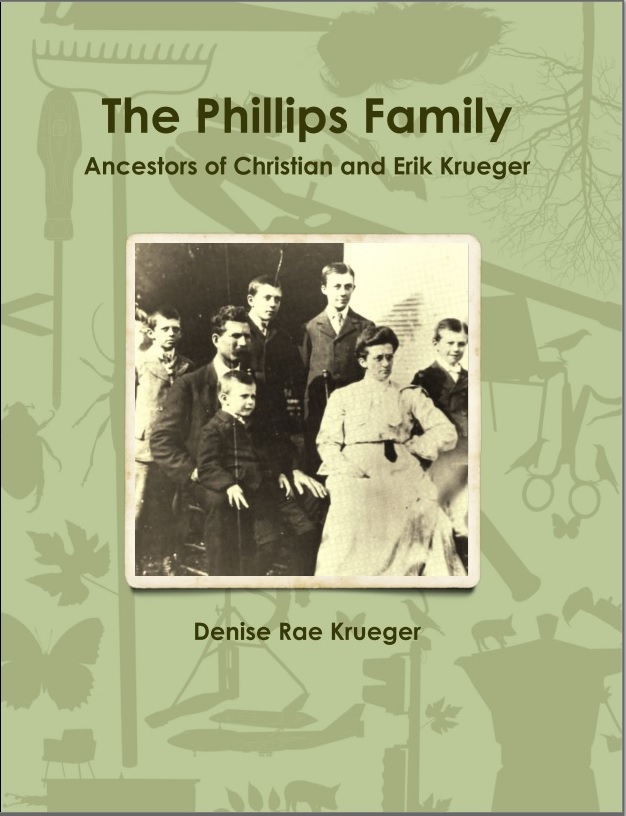


Leave a Reply